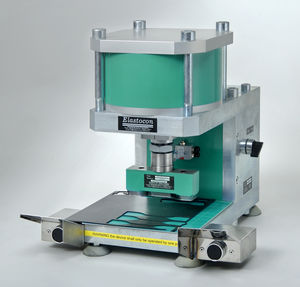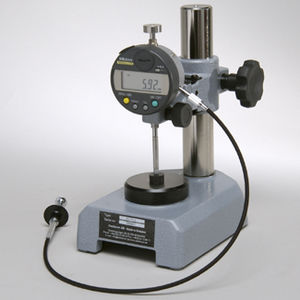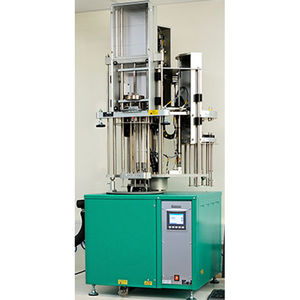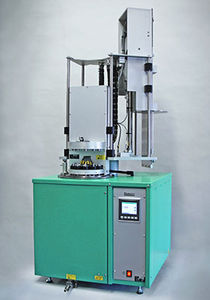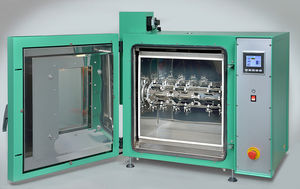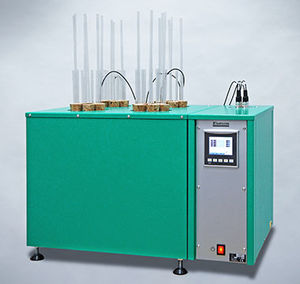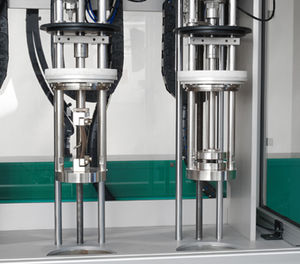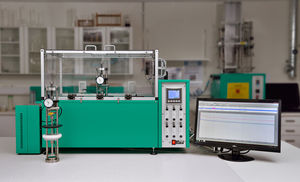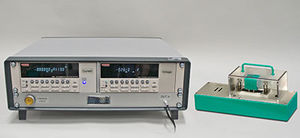
Thermostatic test chamber ET 01-IItemperature

Add to favorites
Compare this product
Characteristics
- Type
- thermostatic
- Controlled parameter
- temperature
- Temperature
Max.: 30 °C
(86 °F)Min.: -80 °C
(-112 °F)
Description
TR Tester, ET 01-II
TR Tester, ET 01-II, for determination of low temperature characteristics by the temperature retraction procedure according to ISO 2921 and ASTM D1329.
The Elastocon TR Tester has 6 test stations, is computerized, and performs the test automatically after the cooling media has been cooled down, and the samples have been mounted. The instrument has an automatic release of the samples, after the pre-cooling time.
The computer controls both the temperature rise and measures the length change of the samples. The results are displayed in a graph and TR10, TR30, TR50 and TR70 values are calculated. The result can also be presented as a table with length change versus temperature. The TR-values and the table values can be exported to other software such as spreadsheets.
We recommend the automatic cooling system with liquid nitrogen that can be supplied.
Another useful option is the ET 04 freezer for precooling of the cooling media (usually ethanol), during nights or other times when the instrument is not in use. If the cooling media is pre-cooled, the amount of liquid nitrogen necessary to start the test will decrease remarkably.
Standards
The TR Tester performs well inside the apparatus requirements in ISO 2921 and ASTM D1329.
Temperature control
Temperature range: -80 °C to +20 °C
Accuracy: ± 0,5 °C
Resolution: ± 0,1 °C
Sensor: Pt 100, 1/3 DIN
Length measurement
Indicators: 6 pc digital encoders
Resolution: 0,1 mm
Measuring range: 0–150 mm
Important specifications
The rig is raised with the help of a pneumatic cylinder
VIDEO
Catalogs
Low Temperature Testers
8 Pages
Related Searches
- Test machine
- Measuring device
- Test cabinet
- Temperature test cabinet
- Thickness measuring machine
- Automatic test equipment
- Stainless steel test cabinet
- Test chamber with window
- Thermostatic test chamber
- Digital display thickness gauge
- Hydrometer
- Film testing machine
- Stationary thickness measuring machine
- Creep testing machine
- Resistivity measuring device
- Adhesion tester
- Plastic film testing machine
- Rubber thickness gauge
- Sensor testing system
- Stiffness test equipment
*Prices are pre-tax. They exclude delivery charges and customs duties and do not include additional charges for installation or activation options. Prices are indicative only and may vary by country, with changes to the cost of raw materials and exchange rates.




